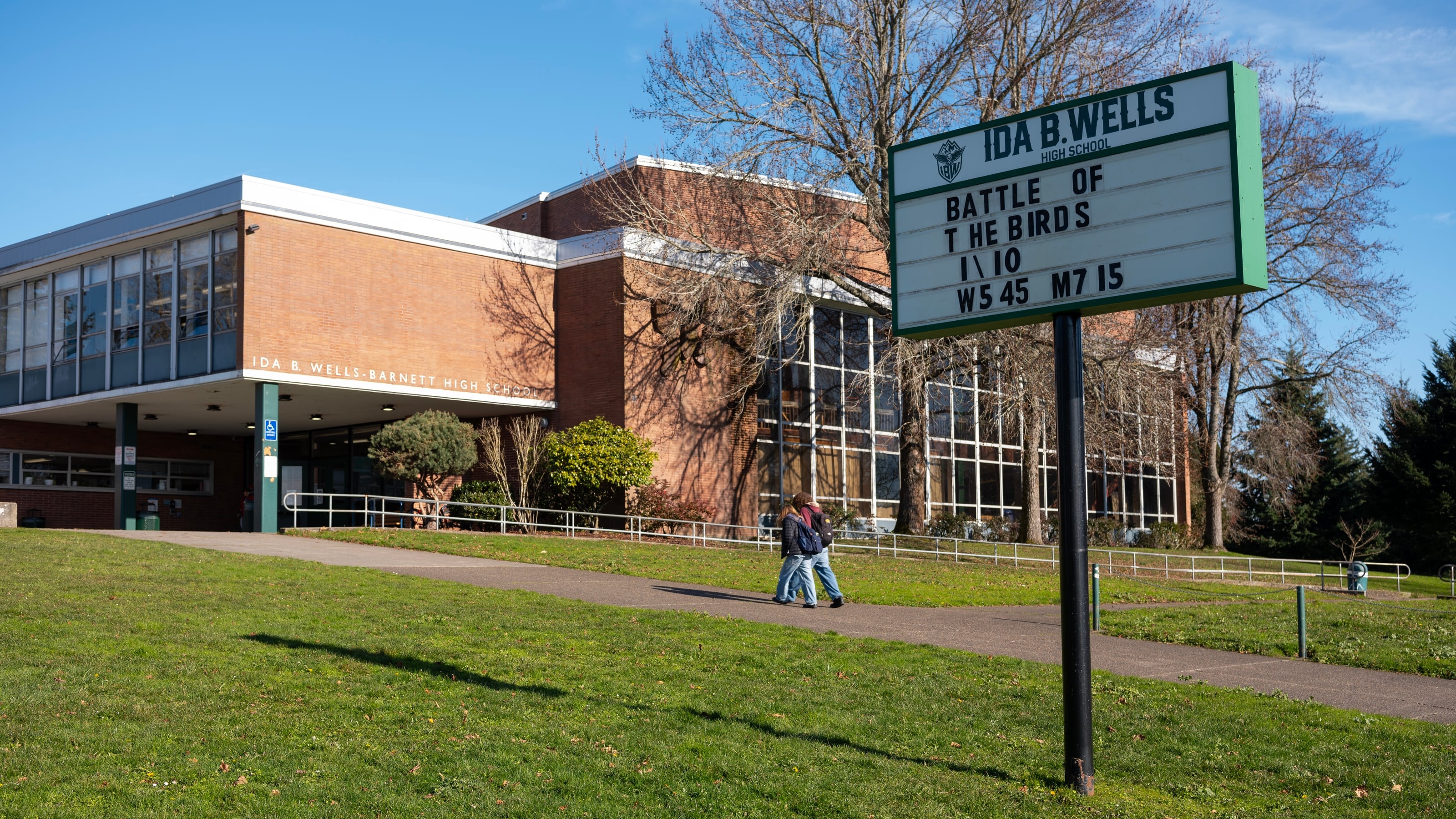As Portland Public Schools tries to curb its sky-high school modernization costs, district officials asked School Board members where they’d be willing to make cuts for upcoming projects at Cleveland, Ida B. Wells and Jefferson high schools.
Those three high schools are on the docket for modernizations from the district’s upcoming $1.83 billion schools bond in the May 2025 election. They were also slated to be some of the nation’s most expensive new schools before the board asked planning committees to look for cost-saving measures in December.
On Tuesday, the School Board was finally presented with a long-awaited report from Cornerstone Management Group, whose findings were first reported in The Oregonian. The report compared five Portland rebuilds with nearby Beaverton, finding Portland spent much more than the neighboring district.
At a School Board meeting on Tuesday night, a district staff memo grouped cost-saving recommendations from the report into three broad categories: reducing building sizes and costly spaces, adjusting sustainability standards, and adjusting equity in contracting goals.
Reducing building size is the top priority for district Superintendent Dr. Kimberlee Armstrong. While Beaverton High School is being built at about 300,000 square feet, all three upcoming projects are slated for 320,000 square feet. “My recommendation is that we pursue a 300,000-square-foot-size high school that would save $24 million across three projects,” Armstrong said Tuesday.
“The hope was to be able to save upwards of $70 million or $80 million through this report and [with] all of these features that’s just not going to happen. So what are some small wins that we can get out of this?” she asked board members.
Size might be a logical cut for the district. The possibility of scaling back comes amid a new population forecast by Portland State University that shows PPS stands to lose about 15% of its students in the next decade.
But the School Board, which Chair Eddie Wang compared to a hydra (a mythological monster with seven heads), was not unified in what recommendations to present to staff on Tuesday night. A series of extra board meetings is planned to work out differences ahead of the bond campaign.
“I think the bond is in jeopardy if we don’t quickly resolve this issue,” said board member Julia Brim-Edwards. “It’s frankly dead in the water if we don’t answer the question to taxpayers what it is they’re buying.”
Here’s where each of them are:
Christy Splitt (Zone 1): Splitt, the School Board’s newest member, oversees the zone that encompasses Ida B. Wells. That didn’t stop her from wanting to look at the size of new schools. She pointed out that the Lincoln High School modernization (which came in under budget) was built to about 300,000 square feet and is “a world-class high school.”
“If people are concerned about, oh, you’re going to take this or that, I think really it’s, no, we’re going to build these high schools to roughly the same size and not have others that are bigger than the ones that we’ve just done and can all agree look pretty great,” she said.
The district’s commitment to climate-friendly policy, she noted, came from student voices. “To me, that’s really important that we adhere to that,” she said. But she asked if there were alternatives to LEED gold standards that still met what students asked for.
Michelle DePass (Zone 2): DePass, whose day job is in climate, was also reluctant to compromise those standards and asked similar questions about alternatives to LEED gold standards.
DePass’ zone encompasses Jefferson, which enrolled just 459 students this year. “I would love to see what the trade-offs are in terms of square footage and student capacity, but I don’t think that we should base it on current enrollment because, if we do, then again Jefferson suffers because Jefferson has a really low enrollment,” DePass said, adding she’d rather use population projections.
She favored reevaluating some costly spaces—like teen parent centers or full-fledged health centers—but did not want to cut any resources from performing arts centers.
Patte Sullivan (Zone 3): Sullivan wanted to get more information about how teen parent centers and health centers were being utilized in other schools before making a recommendation.
She was in favor of eliminating basements to save costs and was open to switching from mass timber to steel and concrete construction, but did not want to compromise all-electric elements.
Herman Greene (Zone 4): Greene was not willing to budge on how many students the new schools will accommodate. (PPS is building all three new projects to hold 1,700 each.) “I don’t believe that we should be building the schools smaller because that’s looking at right now and it’s not thinking about where we’re going,” he said.
If square footage is adjusted, he said he’d like information on whether the district can build higher to give the new schools the same spaces as other schools in the district—including teen parent centers. He was also not willing to cut the arts, and expressed disappointment that PPS staff had not come with recommendations on where to save.
Gary Hollands (Zone 5): Hollands expressed his frustration toward PPS staff for not answering his questions and providing their recommendations to the board. He added that without his questions answered on topics like equity in contracting, he would not make informed decisions. “How am I supposed to give you direction if I’m not getting my questions answered?” he said.
Julia Brim-Edwards (Zone 6): Brim-Edwards’ zone encompasses Cleveland. She expressed concerns about how community members would get everything they wanted in new schools while also making cuts to the modernization budgets.
“I could maybe get to 300,000 square feet if I knew what’s in it,” she said. “There was a promise before the referral that we weren’t going to cut out academic and student spaces, so I want to make sure we could do it, but I think it’s worth looking at.”
She wanted clarification from staff about a number of topics, echoing Hollands' concerns about providing uninformed recommendations. She asked for enrollment numbers at previous projects before and after modernizations, more information about teen parent centers and health centers, and about why the district was paying a premium for equitable contracting.
Like Splitt, Brim-Edwards noted student involvement in the climate plan and her desire to prioritize that. She said there’s “no way” she’d support the project if it wasn’t electric moving forward.
Eddie Wang (Zone 7): Wang was in favor of exploring square footage reductions down to 300,000 square feet. He was not in favor of getting rid of all electric commitments.
“There’s still a lot of evidence of long-term savings, so maybe [electric] is a little more expensive up front but long term the hope is that we save more in maintenance, which is where we’re struggling to try to get money,” he said.

